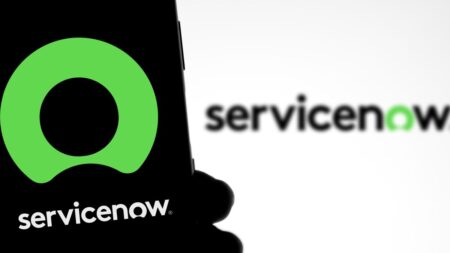Unless you have been living under a rock, the RPA market is hot and shows no signs of slowing down with a CAGR of 25% by 2025.
Something that’s adding fuel to this fire is a truly competitive market. A couple of days ago, Google announced a strategic, multi-year partnership with Automation Anywhere as part of their Google Cloud transformation. What this means is that Automation Anywhere will be Google’s preferred RPA partner and Google Cloud will be Automation Anywhere’s primary cloud provider.
This partnership really puts Google as a player on the court now. What will be interesting to see is how this will help scale Google’s low-code/no-code platform now that RPA will be another tool in the toolbox.
The pressure is now being put on other business application solution providers – mainly, in mind, on Microsoft. Microsoft’s approach was through the Softomotive acquisition to roll this into their Power Automate offering. And, Google’s approach was through a mutual partnership.
So, what’s my take on this?
The next big area to keep an eye on will be the industry-focused offerings many of the big cloud providers have.
Why is this important?
Many of the cloud providers cover both ends of the spectrum from complex, first-party apps to low-code/no-code solutions. However, these still require a lot of configuration and customization to be easily deployable for specific industries. And, many of these industries still rely on paper documents or legacy systems within their environments.
By having a go-to-market strategy in place, these major players are positioning themselves to offer these industry-specific and (mostly) turn-key solutions. This provides customers with a quicker ROI on their application investments – mainly due to not having to purchase multiple add-on solutions to fill gaps.
And, don’t discount Oracle and SAP. Recently, Bob Evens, founder of Cloud Wars, highlighted this ongoing beef between the companies over statements made over various deals “won”, and with SAPs counter of those Oracle statements citing “exploding demand”.
Either way, both companies are focused on RPA which, again, adds more fuel to the RPA heat.
This brings me to my final take on this topic: Closing the gaps with end-to-end solutions.
You might be asking, “Don’t all app service or cloud providers offer end-to-end solutions?” Great question! But really think about it, most of us in our personal lives are used to app jumping when on our devices. Not a big deal. However, if you work in a company have to app jump all the time, this is a huge time-waster and hurts your productivity.
While many of the providers claim to have end-to-end solutions, behind the scenes there are a lot of integrations, workflows, automation, and other layers to make it seem like an end-to-end solution.
But, if these solutions can be industry-specific, and easy to deploy, then this makes finance happy with a quicker ROI, and operations happy with a highly efficient, time-saving app.
Many folks are getting burn-out from being told, “Well, just drop in this add-in for this or this other add-in for that”.
What I hope to see is that these industry-specific have RPA baked into their overall models instead of relying on marketplaces. Paper shuffling and document management are still huge headaches, even in our modern era. And, the legacy, out-dated systems still need to be touched for some god-forsaken process that was put in place 20 years ago and no one updated.
Are you still dealing with gaps that RPA could fill?
Related DAC Content
Back @ IT Take: Cybersecurity Is Taking A Hit – Could It Be A Good Thing?
Back @ It: Exploring Business Process Automation asking “Are Bots Taking Over?” (Episode 4)
RPA: The New Manufacturing Industry Norm?
Executive Summary: Accounts Receivable (AR) Automation – 2021 Guidebook
The Wrap: “Guess the CAGR”, Automation, Cloud Migration, and RPA





